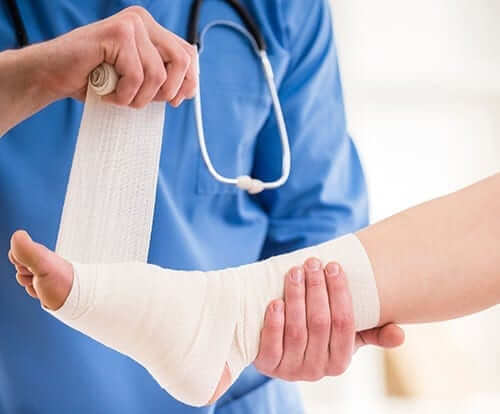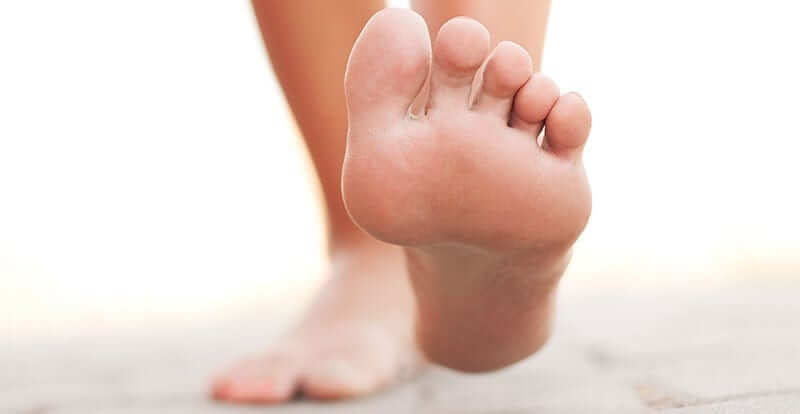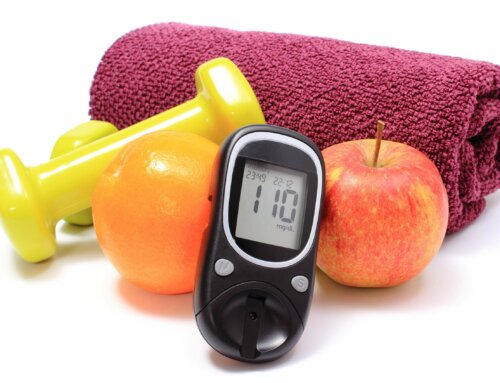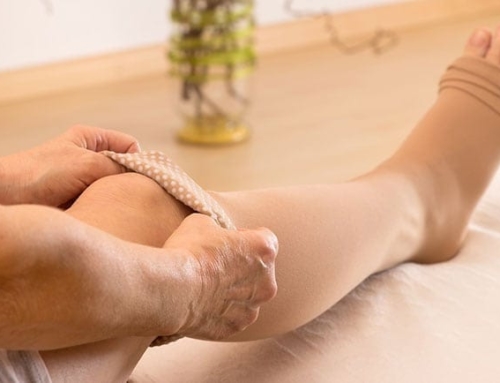Care of the skin is one of the most important aspects of routine diabetes maintenance. Without proper precautionary measures, minor cuts or injuries can quickly turn into serious problems. People with diabetes often heal more slowly than normal because of less blood flow to affected areas and reduced white blood cell function. They may not notice injuries right away if they suffer from diabetic neuropathy, nerve damage which can numb sensations and pain. Find out more about the importance of diabetic wound care.
Diabetic Wounds Can Cause Problems
Because the body cannot use sugar the way it should, people with diabetes can face complications when they get wounds. This chronic condition makes it harder for wounds to heal.
Problems That Slow the Healing Process
Some people with diabetes have neuropathy. When you have nerve damage you may not feel the pain of a blister or cut until it gets worse or becomes infected. People with diabetes also have a weakened immune system. As a result, even a small wound could become prone to infection. Additionally, those with narrow arteries or clogged arteries in their legs due to peripheral arterial disease could develop serious wound infections and have difficulty healing. Narrow arteries make it harder for blood and oxygen to get to the wound to promote healing.
Basic Wound Treatment and Products
Get to know the basics about wound care and the different diabetic wound care products that can be used to help treat your wound before an accident happens. Even small wounds must be cared for immediately.
Treating a Wound
Ignoring a small cut or scrape can mean bacteria builds up and an infection can develop. Rinse the wound under cool running water with mild soap to get rid of dirt. Do not use alcohol, iodine, or hydrogen peroxide which can irritate your skin. After washing use a sterile bandage and antibiotic ointment. Always have your doctor or podiatrist check the wound and do not assume anything. Failure to treat properly can lead to bigger problems. Robert Snyder, DPM, medical director of the Wound Healing Center at University Hospital in Tamarac, Fla., and incoming president of the American Academy of Wound Management in Washington, D.C. states, “It’s far easier to treat a minor skin problem before it becomes serious”. Immediate treatment can prevent infection and tissue damage.
Taking Care of Our Largest Organ
Skin is our body’s largest organ. It is inevitable that this protective layer will get wounded. If you have diabetes, you need to take extra care when you develop a wound. Prevention is always the best way to avoid more serious problems, but this is not always possible. Consider a few guidelines to follow for prevention and wound care.
Uninfected Wounds Need Care

Serious Wounds Require Medical Attention
While a simple scrape or cut may be taken care of at home, more serious wounds should always be checked and re-checked by a doctor. This includes deeper cuts and infected wounds.
Avoid Skin Infection
For serious wounds, especially infected ones, consult with a doctor for treatment recommendations immediately. Skin infections in people with diabetes usually require prescription medications including antibiotics or ointments specially formulated for those with diabetes. This can reduce the risk of infection or heal the present infection and help promote the healing process.
Routine Skin Care
Maintaining routine skin care can help protect this protective layer and prevent potential problems. People with diabetes should check their skin daily and take proper care of it to reduce risks.
Tips for Skin Care
During routine skin care, those with diabetes should avoid using any implement that scrapes the skin, such as pumice stones and callus or corn removers. These products can potentially do damage to sensitive, delicate or injured skin. Keep skin hydrated by using moisturizing lotions to prevent cracking, which can lead to infection. Choose unscented, non-irritating lotions and mild soaps to avoid irritation. Never rub the skin. Gently pat it dry with a soft, absorbent towel. Avoid taking hot baths or showers that can cause dry skin. Use lukewarm water instead. Carefully wash any creases in your body. Dry them and apply unscented cornstarch powder to areas that are prone to perspiration. Ask you doctor about non-irritating deodorants and antiperspirants to use on your underarms. Monitor your blood glucose levels carefully to help wounds heal more quickly.
Taking Care of Your Feet
People with diabetes need to take special care of their feet. It is essential to check your feet each day to look for sores, red spots, and changes in temperature, calluses, cuts, and other irritations.
Checking Your Feet and Routine Maintenance
Check your feet every day to detect any irregularities. Use a mirror if you have difficulty seeing the bottoms of them. Remove your shoes and socks during routine medical exams so you doctor can check your feet. Wash your feet daily with mild, unscented soap and lukewarm water. Dry them gently and apply a fragrance-free lotion, avoiding the areas between your toes. Trim your toenails straight across. Never cut calluses. Have them treated by a professional called a podiatrist. Podiatric care is included if you have Medicare and have diabetes. Some insurance companies cover the cost of a medical pedicure. This is a great option if you have trouble reaching your feet or maintaining your nails due to nail fungus. Never self-treat ingrown toenails when you have diabetes. Have your feet measured and wear shoes that fit properly. Always wear shoes and avoid going barefoot or wearing open-toed shoes, such as flip-flops. Wear slippers at home and water shoes at both the beach and pool.
Foot Wounds in People with Diabetes
Often people with diabetes are prone to getting foot wounds and ulcers. Early detection and wound care treatments make a major difference in how they heal.
Treating Foot Wounds
Foot wounds are especially prevalent in those with diabetes. Avoid walking barefoot to prevent foot injuries. To promote healing of foot wounds or ulcers pressure to the area should be alleviated as much as possible. Proper application of medicines and dressings is also important to speed healing. You may wish to wear therapeutic shoes or seamless socks that are designed to address the problems diabetes may cause.
How to Prevent Wounds
Some simple steps can help people with diabetes prevent wounds and avoid harmful infections. It takes just a few minute to take care of your skin.
Daily Skin Care Routines
Check your feet and skin each day for wounds and irregularities. Check your shoes and clothing for objects or irritating seams before putting them on. Follow the tips above for proper foot care. Manage your diabetes and keep it under control. Monitor your blood glucose, cholesterol, and blood pressure levels regularly. Take medications as prescribed by your doctor. Eat a balanced diet to promote healthier skin and improved healing. Exercise for a half hour each day to get the blood flowing to your skin. Learn to schedule regular medical checkups with your health care team. Avoid skin-damaging habits such as smoking. Consult with your doctor about smoking cessation clinics, hypnosis, and other ways to help you kick the habit. Wear sunscreen when outside to prevent sunburn. Moisturize skin at the end of the day after a shower when the skin is damp for best absorption.
Proper care and prevention of wounds can help diabetics avoid serious complications. Be sure to inspect your feet and body every day for signs of cuts or injury, and to treat each problem right away. The right diabetes wound care can help keep your skin healthy and attractive.







Diabetic Wound Care is quite a challenging task because diabetes often heals more slowly than normal, but the tips that you are shared in this post is really amazing. I think, these all tips are simple but effective and easy to follow for everyone. Thanks for sharing.